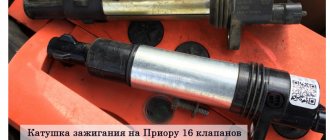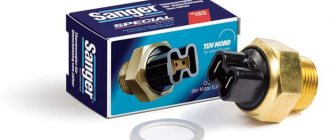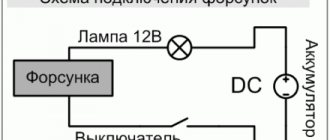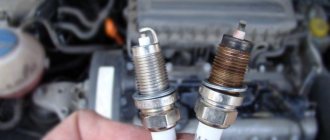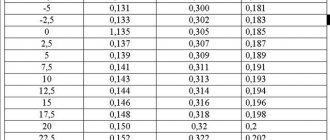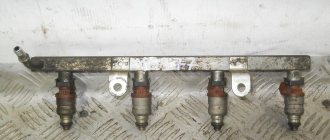Any extraneous noise in a car engine often makes owners feel wary. And even if these sounds do not affect driving performance in any way, their very appearance makes the driver think about diagnostics. Many cars have knocking pins when accelerating, but this problem is often ignored. The sound appears when the car picks up speed. If you do not pay attention to this in time, much more serious problems arise. At the same time, car enthusiasts cannot determine the reasons for the appearance of knocking noises, nor can they fix this problem on their own. Let's look at the reasons for these sounds that are unpleasant to the driver's ear, and also find out how to fix these problems with the engine.
Knocking fingers
A ringing metallic sound may be heard from an engine that is running under load. They disappear when reaching a certain speed. Old school mechanics will say it's the "fingers" chattering during acceleration. However, the driver will be surprised, and he will be completely right: the sound has nothing to do with the “fingers” installed in the pistons.
Why "fingers"?
The combustion process of the combustible mixture in a fully operational engine proceeds sequentially. A flame flares up near the spark plug, and gradually it fills the entire cylinder. But there is another combustion option - detonation. The explosion of the fuel mixture in the combustion chamber occurs abruptly. This increases pressure and temperature. This very explosion is called detonation. That's why the driver hears a knock - it comes from the blast wave. Proper combustion implies a fire propagation speed of up to 30 m/s. The gas pressure increases gradually. With this type of combustion, the flame fills the cylinder gradually. The gases press gently on the piston. There is no knocking of gas against the walls of the combustion chambers, since there is no explosion. If the burning rate is higher, then these are the prerequisites for detonation. By the way, this phenomenon is very harmful to the engine.
Engine detonation: what is this process and features of its manifestation
The phenomenon of detonation is familiar to many who have driven Zhiguli and Moskvich cars and filled them with AI-76 gasoline instead of the prescribed A-80. As a result, the detonation process did not take long to occur and manifested itself mainly after the ignition was turned off. At the same time, the engine continued to function, and caused surprise and even laughter on the face of an inexperienced driver. However, there is little good in this phenomenon, because with this process the CPG wears out very quickly, which leads to a decrease in engine life, and as a result, engine malfunctions appear.
On modern fuel-injected cars, detonation also occurs, and not only due to poor quality or inappropriate fuel being poured into the tank. The reasons for the occurrence of such a process are various factors, and before we get acquainted with them, we will find out what the engine detonation effect is and why it is so dangerous.
Detonation is a phenomenon in which spontaneous ignition of the mixture in the combustion chamber occurs without the supply of a spark from the spark plugs. The result of this process is unstable operation of the engine, and the consequences are not long in coming, and if this effect occurs frequently, problems with the engine may soon begin. In this process, not only the CPG comes under attack, but also the gas distribution mechanism.
To prevent the prolonged occurrence of this process, a knock sensor is used in the design of modern injection cars. It is a kind of noise eliminator that transmits information about abnormal engine operation to the electronic control unit. Next, the ECU makes an appropriate decision on the possibility of promptly eliminating the problem.
Detonation - what is it?
If the “fingers” knock during acceleration, this indicates detonation in the engine. This is the name given to an instantaneous and very destructive in its force explosion of any flammable substance after an impact or activation of a detonator. This is the definition according to Ushakov’s dictionary. Detonation of flammable substances for car engines is the rapid burning out of a mixture of gasoline and air. Occurs when the engine operates under load at low speeds and low-quality fuel. This process is accompanied by knocking, vibration, and increased temperature. As a result, the “fingers” knock during acceleration (including the VAZ-2112).
Engine detonation: main symptoms
So, detonation is an uncontrolled chaotic process of fuel combustion, which is more like explosions in a cylinder. Moreover, these conditional explosions occur untimely (for example, on the compression stroke, when the piston is still moving upward). As a result, the shock wave and high pressure cause severe loads on the elements of the CPG and crankshaft, literally destroying the engine.
Detonation is determined not only by sound, but also by a number of other signs. First of all, the engine loses power when you press the gas, and the engine may also smoke a little when you sharply press the accelerator pedal with grayish-black smoke. Typically, severe detonation is accompanied by engine overheating; at idle and under load, the operation of the internal combustion engine can be extremely unstable, the speed jumps, etc.
Typical causes of ringing “fingers” during normal operation of the internal combustion engine
If the “fingers” knock during acceleration in the Kalina, the mass air flow sensor may have failed. If it is not working correctly, then the ECU will receive incorrect information and issue incorrect commands. Another reason is an incorrectly set ignition timing. For this reason, the point at which the fuel will burn maximum is approaching TDC. This leads to increased pressure in the combustion chamber. If the “fingers” knock when accelerating on a Ford Focus, then the knock damping sensor may have failed. It's definitely worth checking this item. If it stops working, it should be replaced.
The danger of detonation effect on a car and the reasons for its occurrence
Detonation loads are dangerous for any internal combustion engine, and that is why all manufacturers of modern cars equip units with special sensors. Such devices do not exclude the possibility of a process occurring, but warn of its occurrence, which allows the controller to quickly resort to eliminating the problem.
To appreciate the danger of such a process, which is called internal combustion engine detonation, you should look at the photo below.
They depict engine parts that were removed during repair work. The piston and valve suffered such severe destruction precisely because of spontaneous ignition of the fuel in the combustion chambers. The piston and valve are not the only parts that experience accelerated wear during detonation. Because of this phenomenon, other parts, such as the crankshaft and crank mechanism, also experience strong loads.
The causes of engine detonation loads are the following factors:
- Fuel octane number mismatch. If the manufacturer recommends using A-95 gasoline, then using low-octane fuel is strictly contraindicated. Detonation, which occurs due to fuel mismatch, contributes to the formation of carbon deposits, which provokes the development of glow ignition. As a result, after turning off the ignition, the engine continues to function, which is manifested due to the ignition of the fuel assembly from the hot electrodes of the spark plug.
- Operating conditions and driving habits. Very often, engine detonation occurs among inexperienced drivers when upshifting occurs at too low a vehicle speed and with insufficient crankshaft revolutions. It is important to switch to the next gear when the engine speed on the tachometer is between 2.5-3 thousand rpm. If you switch to a higher gear without first accelerating the car, it is possible that a characteristic metallic knock will occur in the area of the engine compartment. This knock is engine detonation. Such detonation is called permissible, and when it occurs, it does not last long.
- Design features of the engine - cars that are equipped with turbocharging are especially susceptible to the development of a negative phenomenon. This effect often occurs if the car is fueled with low-octane fuel. This also includes factors such as the shape of the combustion chamber and tuning (boosting) the internal combustion engine.
- Incorrect setting of the ignition timing angle. However, this phenomenon is more common on carburetor engines, and on an injector it can occur, among other things, due to a malfunction of the knock sensor. If the ignition is too early, the fuel will ignite much earlier than the piston reaches top dead center.
- A high degree of compression in the cylinders often occurs when the engine cylinders are heavily coked. The more carbon deposits on the cylinder walls, the higher the likelihood of detonation loads developing.
- Lean fuel assembly. If a mixture with a low amount of fuel is supplied to the combustion chamber, the high temperature of the spark plug electrodes contributes to detonation. A small amount of gasoline and a large volume of air leads to the development of oxidative reactions that respond to increased temperature. This reason is typical for injection engines, and usually appears only on a warm engine (usually at crankshaft speeds of 2 to 3 thousand).
This is interesting! Very often, the cause of self-ignition of fuel assemblies in cylinders is associated with a change in the ECU firmware. This is usually done to reduce fuel consumption, but the engine suffers from such a whim of the car owner. After all, one of the reasons for the development of detonation load is a lean mixture.
If the knock sensor fails, this will not cause detonation processes. If the ECU does not receive the appropriate information from the DD, it will go into emergency mode when the ignition timing is adjusted with a deviation towards late ignition.
This, in turn, will entail many negative consequences: increased fuel consumption, decreased dynamics, power and instability of the internal combustion engine.
Why does detonation occur in engine cylinders?
Experts identify several main reasons why fuel detonates in the engine.
- First of all, it is worth immediately highlighting the use of low-octane gasoline in units with a high compression ratio. Simply put, the octane number of gasoline (AI-92, 95 or 98) actually indicates its resistance to detonation, and not its quality, as many people mistakenly believe.
The use of fuel with an inappropriate octane number for a particular engine naturally leads to the fact that the fuel-air charge detonates under strong compression. Let us also add that simple engines that do not have an ECM and a knock sensor are at greater risk.
- Engine coking. It is important to understand that modern engines not only in foreign cars, but also in domestic cars are very different from their analogues from the times of the USSR. In a nutshell, if the engines on the Moskvich 2141 model had a compression ratio of about 7 units and worked normally on any fuel, today the units have from 9 to 11 or more units.
- Violation of the mixture formation process. In this case, a too “rich” mixture, in which there is a lot of fuel in relation to the amount of air, may begin to detonate.
Note that such detonation can be short-term and often goes unnoticed by the driver, however, it is impossible to say that there is no harm to the engine.
- Ignition timing (IDA). In simple words, the ignition angle determines at what point the spark will be supplied to the combustion chamber. If we consider that normally fuel does not explode, but burns, then it becomes clear that the combustion process also takes some time.
In this case, it is important to ensure that the maximum gas pressure on the piston, which is formed as a result of the combustion of a portion of fuel, occurs precisely at the moment of the working stroke of the piston. This is the only way to effectively transfer the energy of the expanding gases through the piston to the crankshaft.
To do this, the spark can be applied a little earlier than the moment the piston reaches top dead center (TDC). During this time, the fuel will have time to ignite, and the expansion of gases and an increase in pressure on the piston will occur just at the moment when the piston has already reached TDC and then goes down.
- Design features of the combustion chamber. It happens that some engines are initially prone to detonation. In some cases, the reason is the design of the combustion chamber itself, the implementation of its cooling, etc.
Another culprit may be pistons that have an unsatisfactory thermal balance (for example, the piston bottom is thickened closer to the center, which noticeably worsens the quality of excess heat removal). One way or another, the risk of detonation on such engines is much higher.
- Engine overheating. If you pay attention to the previous point, it becomes clear that an increase in temperature in the combustion chamber is the cause of detonation. It is quite obvious that a decrease in the efficiency of the cooling system can lead to the engine overheating.
How to check the knock sensor?
Unfortunately, the knock sensor can also fail. In this case, a person without special knowledge will be able to notice this only by the lit indicator. No other obvious signs will be noticed. The car will continue to operate in the same mode and start without any signs of breakdown.
At this point, it is necessary to remember that this device is not mechanical, it is part of an electronic system, and therefore the breakdown is considered electronic.
A knock sensor malfunction can happen for a number of different reasons, including:
- There has been a breakdown inside the sensor itself.
- Closure.
- The signal wire or braided shield is broken.
- Damage to the engine control unit.
Thus, it will not be difficult to identify the breakdown. In order to determine it, it is necessary to conduct a test.
The easiest way to check is to go to a car service center. There, experienced craftsmen will open the engine protection and identify the breakdown in just an hour.
But those who are not looking for easy ways can always carry out this simple process on their own. Self-checking occurs according to the following scheme:
- First, we remove the protection in the garage. You will have to work directly with the engine block.
- Now we rule out a break in the signal wire and shielding braid. If it is torn or the braid is torn, you need to check the fastening of the plug and socket of the sensor. The integrity of the braid must be checked.
- If a break is excluded, the outlet itself is assessed. It is possible that its connection is faulty and requires replacement.
- You can detect faults in the device itself using a voltmeter. In this case, the car must be started and idling.
- You also need to check the condition of the device contacts.
You can check it yourself in a slightly different way. For this you need a multimeter. This device is very often found among car enthusiasts.
A multimeter is a combination device that combines the functions of an ohmmeter, ammeter and voltmeter. You can use either a mechanical or an electronic device.
Checking the knock sensor with a multimeter is carried out only after it is removed from the engine. When checking, they knock on it with something metal. This method is the simplest.
We set the range to 200 mV, connect the positive and negative wires to the sensor terminal and to the metal ring, respectively. Do not confuse ground and signal pin! Now you need to hit it with something metal, but not too hard. The sensor will have to detonate.
You can check the sensor with another device called an oscilloscope. It will allow you to study the signal more qualitatively.
The advantage of using this device is that it does not require removing the sensor from the engine. You just need to connect the device and start the car.
How to eliminate engine detonation
So, having considered the main causes of engine detonation and having understood what it is, we can move on to how to get rid of this phenomenon. Let's start with old internal combustion engines. At the very beginning, you should exclude overheating of the engine, as well as refueling with low-quality or unsuitable fuel, and check the spark plugs.
The solution is temporary, since you cannot drive for a long time with a reduced ignition angle (the exhaust valves will burn out as a result of an increase in the temperature of the exhaust gases), but getting to the service center on your own is quite possible.
However, while driving, you need to constantly ensure that there is no characteristic “ringing” in the engine. You can also install a so-called electronic octane corrector on an old internal combustion engine to avoid manipulations with the distributor. Let us also add that, as practice shows, many owners of carburetor cars prefer to install electronic ignition.
As for more modern engines, injection units are equipped with standard solutions to avoid or minimize the risk of detonation. We are talking about an engine knock sensor (DE), which detects its occurrence. Then the corresponding signal is sent to the ECU.
Then the control unit independently adjusts the ignition timing taking into account the data received from the DD. Moreover, the possibility of such adjustment is, on average, an angle shift of 2 – 5 degrees. If it is not possible to get rid of detonation in this way, the ECU records the error and writes it to its memory, a “check” may light up on the instrument panel, the engine goes into emergency mode, etc.
It becomes clear that in this case, the driver at the initial stage needs to start by checking the knock sensor, and also read errors from the ECU memory. This can be done as part of computer engine diagnostics. You can also perform the check yourself (if you have a special diagnostic scanner adapter for the OBD connector and a smartphone/tablet or laptop with pre-installed software).
How to check engine performance using spark plugs. The main signs of engine malfunctions: the appearance of black, gray, red and white carbon deposits on the spark plugs.
Signs for determining the correct ignition timing. Consequences of an incorrectly configured OZ, methods for setting the ignition.
Purpose and design of the knock sensor. The main causes of detonation, types and operating principle of the sensor.
Why does the fuel-air mixture detonate in the combustion chamber? Reasons causing detonation. Consequences of detonation combustion of fuel in internal combustion engine cylinders.
Why does the engine overheat? What should the driver expect and what damage may occur if the engine overheats. What to do if the internal combustion engine overheats.
Common engine cooling system failures: water pump, thermostat, radiator, cooling fan and others. How to determine the reasons yourself.
What is a knock sensor and why is it needed?
This part is found in cars that use gasoline as fuel. It is intended for injection types of engines. The sensor is located on the engine cylinder block. This is an important part of the control system, the main purpose of which is to control the level of detonation.
There is a similar article on this topic - What is engine chip tuning, pros and cons.
In answering the question of what the knock sensor is responsible for, it should be noted that thanks to it the following vehicle capabilities are realized:
- Fuel economy.
- The ability of the engine to develop maximum power.
Detonation is the electrical impulse created during ignition. It is thanks to detonation that the car starts, complex chemical and physical processes occur inside the engine, and the fuel ignites.
The sensor monitors the vehicle's starting system and regulates its proper operation.
What are the main components of a knock sensor?
The main details of this mechanism are:
- Vibrating plate.
- Piezo type electrical element.
- Signal wire.
- Braid.

